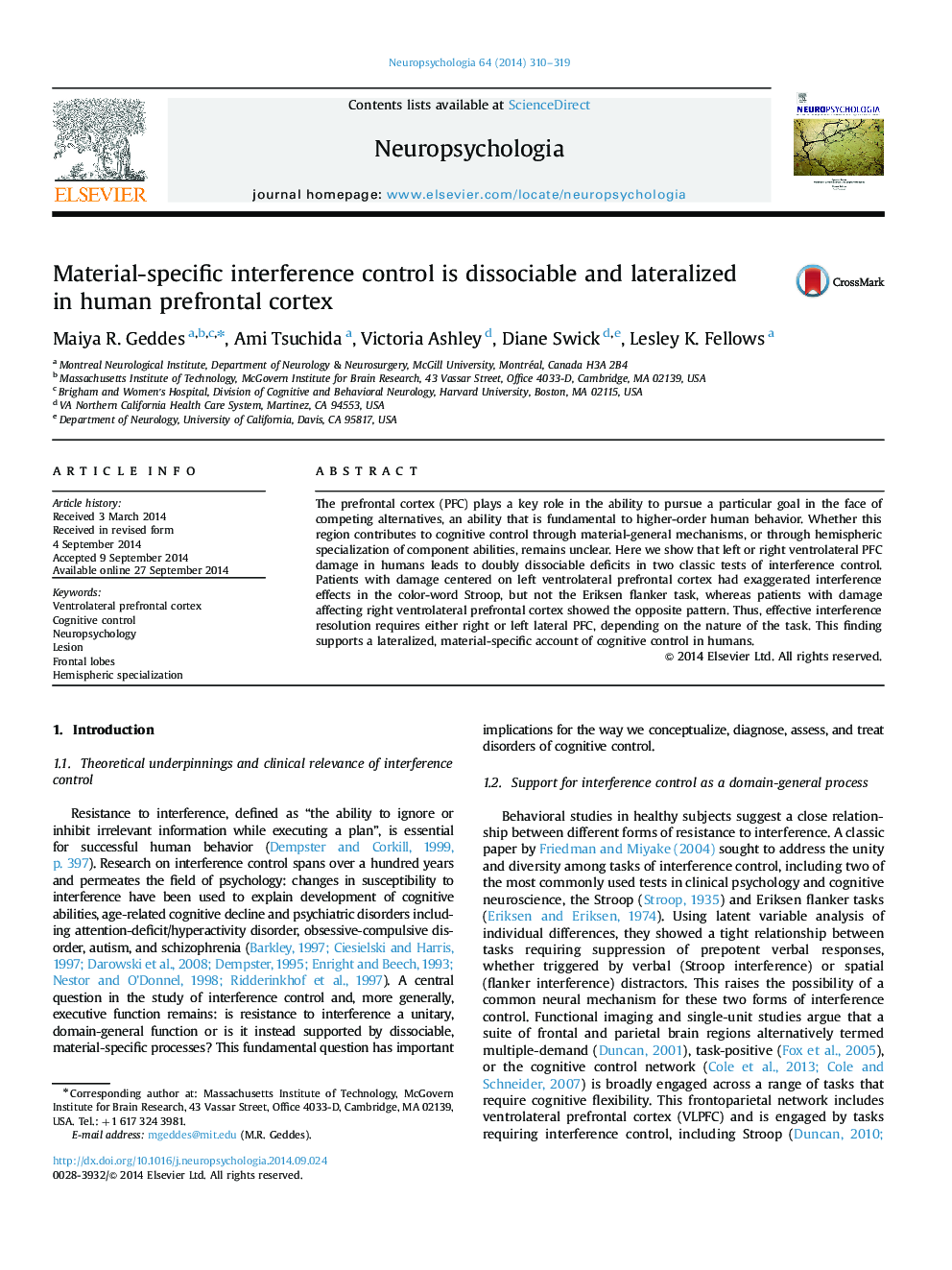| Article ID | Journal | Published Year | Pages | File Type |
|---|---|---|---|---|
| 7320869 | Neuropsychologia | 2014 | 10 Pages |
Abstract
The prefrontal cortex (PFC) plays a key role in the ability to pursue a particular goal in the face of competing alternatives, an ability that is fundamental to higher-order human behavior. Whether this region contributes to cognitive control through material-general mechanisms, or through hemispheric specialization of component abilities, remains unclear. Here we show that left or right ventrolateral PFC damage in humans leads to doubly dissociable deficits in two classic tests of interference control. Patients with damage centered on left ventrolateral prefrontal cortex had exaggerated interference effects in the color-word Stroop, but not the Eriksen flanker task, whereas patients with damage affecting right ventrolateral prefrontal cortex showed the opposite pattern. Thus, effective interference resolution requires either right or left lateral PFC, depending on the nature of the task. This finding supports a lateralized, material-specific account of cognitive control in humans.
Keywords
Related Topics
Life Sciences
Neuroscience
Behavioral Neuroscience
Authors
Maiya R. Geddes, Ami Tsuchida, Victoria Ashley, Diane Swick, Lesley K. Fellows,
